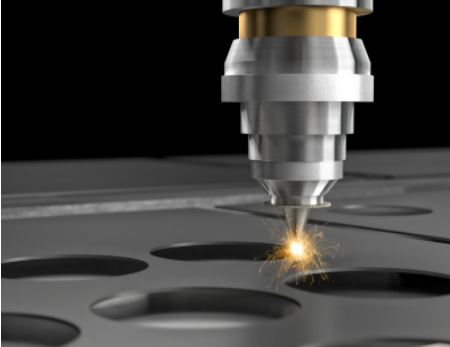September 28, 2020
2516
A conventional fiber laser cutting machine laser includes three parts: working substance, pump source and optical cavity.
1. Working material The working material is the material basis for laser generation, and is the core part of the laser. It is a material system used to achieve population inversion and generate stimulated radiation. There are usually two ways to classify working substances: one is based on the existence of the working substance, which can be classified into gas, solid, liquid, and semiconductor, etc.; the other is applicable to the analysis of the process of laser generation according to the rate equation theory The energy level structure can be divided into three-level system, four-level system, etc.
In the gas laser, the particles of the fiber laser cutting machine laser are gas molecules or atoms. In the solid laser, the crystal or glass doped with a small amount of transition metal ions or rare earth ions is the working substance, and the doped ions are the working particles. The pump generates stimulated radiation after the number of particles is reversed, and crystal and glass are the host materials.
The working substance of liquid lasers is liquid, and dye lasers are common ones. The working substance is a solution composed of dyes dissolved in a solvent. The dye molecules are working particles and the solvent is equivalent to the matrix. The working material of semiconductor laser is semiconductor. Although semiconductor is solid, the formation mechanism of semiconductor laser population inversion is fundamentally different from that of ordinary solid-state lasers, so the two are generally not classified into one category.

2. The pump source is a device that provides energy for the population inversion. According to the energy form used during excitation, the pumping methods include discharge excitation, light excitation, thermal energy excitation, chemical energy excitation, etc.
Gas discharge excitation is a commonly used excitation method for gas lasers. Its excitation mechanism is to use high voltage, gas molecules to ionize and conduct electricity. At the same time, gas molecules (or atoms, ions) collide with electrons accelerated by electric fields to absorb electron energy After the transition to a high energy level, the population inversion is formed. In addition, the high-speed electrons generated by the electron gun can be used to pump the working substance, and the transition to a high energy level is called electron beam excitation; the semiconductor laser is pumped by injection current, It is called injection pump.
Optical excitation is the use of light to illuminate the working material, and the working material of the fiber laser cutting machine absorbs light energy to produce a population inversion. The light source of light excitation can be a high-efficiency, high-intensity luminous lamp, solar energy or laser. Solid-state lasers and liquid lasers commonly use optical excitation methods.
Thermal excitation uses high-temperature heating to increase the number of gas particles at high energy levels, and then suddenly decrease the gas temperature, because the thermal relaxation time of the high and low energy levels is different, the low energy level has a short relaxation time, and the high energy level has a long relaxation time, thereby achieving high and low levels. The population inversion between energy levels.
Chemical energy excitation uses the chemical energy released in the process of chemical reactions to pump particles to the upper energy level, establishing a population inversion. Chemical excitation is not like the aforementioned discharge excitation, light excitation and thermal excitation, which require external energy to work. Therefore, in some special places lacking power, chemical lasers can give full play to the advantages of fiber laser cutting machines.
3. Optical resonant cavity Optical resonant cavity (optical cavity for short) is an external condition for laser generation and an important part of laser. The simplest optical resonant cavity is constituted by appropriately placing two mirrors coated with high-reflectivity materials on both ends of the active medium. The laser has the characteristics of high directivity, high monochromaticity, high coherence and high brightness, and the fiber laser cutting machine is inseparable from the optical resonant cavity.
The optical resonant cavity has the dual functions of positive feedback and mode selection. The so-called positive feedback, that is, the initial light intensity propagates back and forth between the mirrors, which is equivalent to increasing the length of the active medium, and finally a certain light intensity can be guaranteed. The so-called mode selection refers to controlling the characteristics of the oscillating beam in the cavity, so that the oscillation of the fiber laser cutting machine established in the cavity is limited to a few eigenmodes determined by the cavity, thereby increasing the number of photons in a single mode and obtaining good monochromaticity , Strong coherent light with good directivity.
The laser is an electromagnetic wave. The optical resonator of the laser confines the electromagnetic wave within a limited range of space. According to Maxwell's electromagnetic field theory, there can only be a series of eigenstates of split electric waves in a certain space. The state is the mode of the optical resonant cavity, and the laser mode is the eigenstate of the electric wave that can be distinguished in the optical cavity, which is determined by the structure of the cavity.